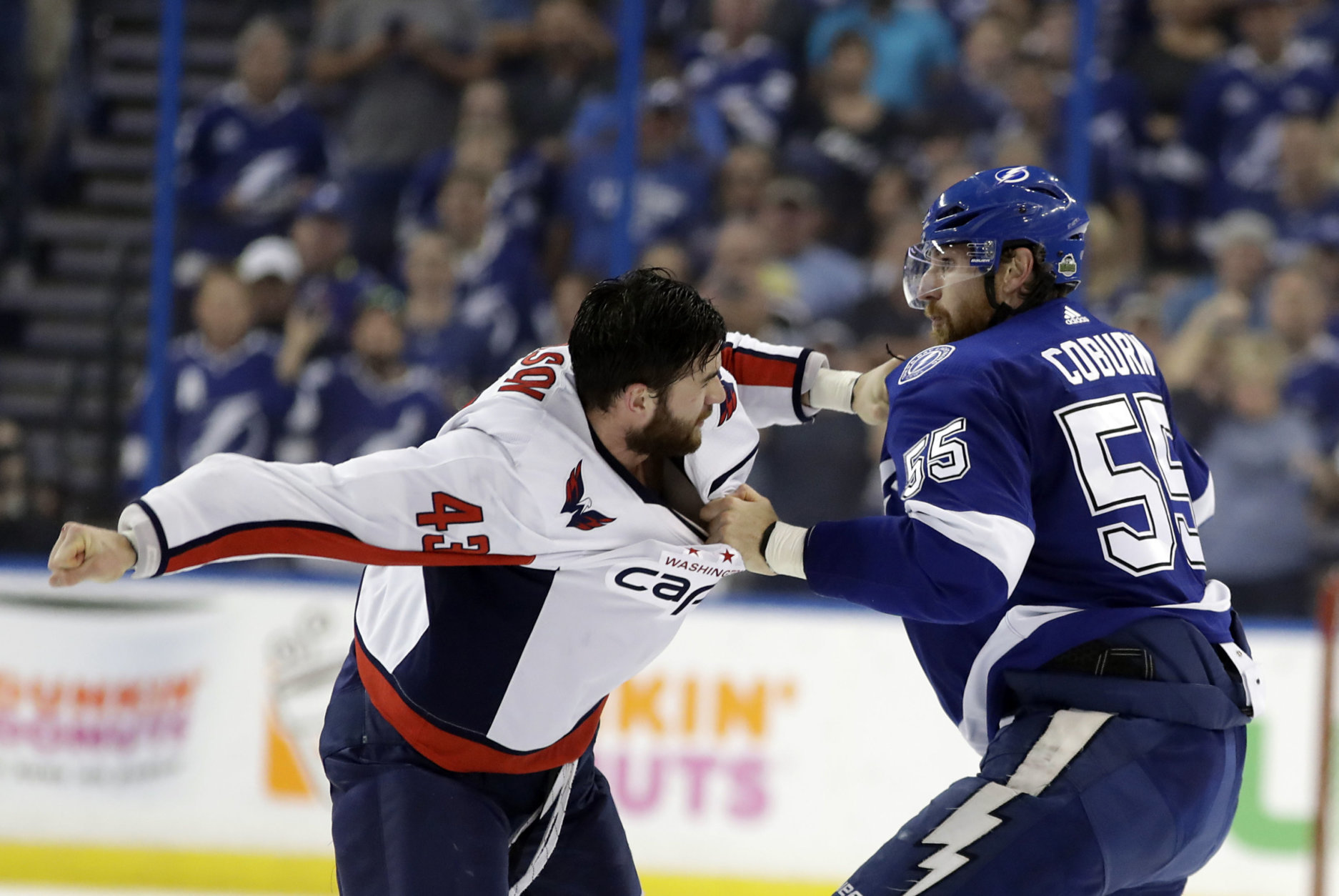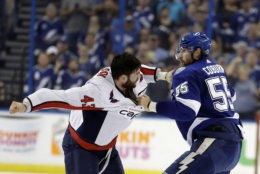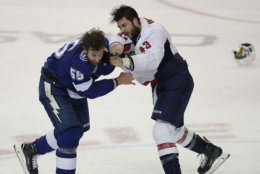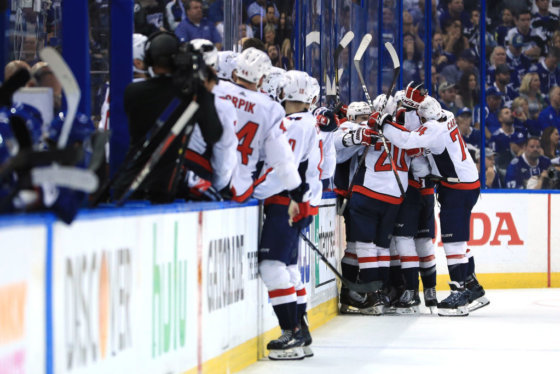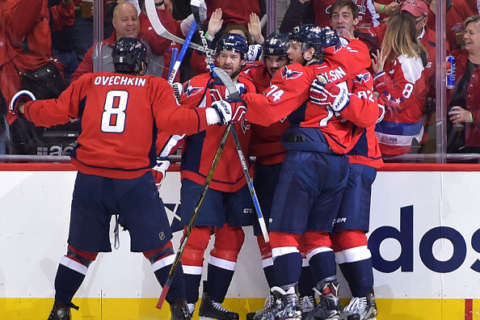WASHINGTON — For the bandwagon-jumping hockey fan (like myself) the pair of Game 7 fights between Washington’s Tom Wilson and Tampa Bay’s Braydon Coburn was simultaneously breathtakingly brutal and beautifully orchestrated.
According to Ross Bernstein, author of “The Code: The Unwritten Rules of Fighting and Retaliation in the NHL,” the bloody battle wasn’t anything personal — it was just business.
I hate violence. I try to make sure my kids don't play violent video games. I was transfixed by that hockey fight.
— Neal Augenstein (@AugensteinWTOP) May 24, 2018
“There’s a living, breathing honor code in hockey that’s been around for 100 years, about how the game polices itself,” said Bernstein. “It’s rarely random — it’s a set of unwritten, unspoken rules that they learn in junior hockey and abide by.”
“Tom Wilson and Braydon Coburn went at it, and it’s very, very rare to see a fight in the playoffs,” said Bernstein. “It’s really unheard of, especially in a deciding Game 7.”
In the first period, Coburn tangled with the Caps Evgeny Kuznetsov, eventually pulling his jersey over his head, and waving it at Wilson.
However, Bernstein said by that time, the seeds of squabble had already been sewn.
Coburn literally undresses Kuznetsov pic.twitter.com/rgfwwjYdym
— Pete Blackburn (@PeteBlackburn) May 24, 2018
“It was really a statement fight. Alexander Ovechkin — the star of the Caps — guys were manhandling him, and it’s the players’ responsibility to protect the meal ticket, so if anyone is messing with the star, you have to send a very clear message.”
Coburn and Wilson each received two minute penalties for unsportsmanlike conduct.
The time in the penalty box clearly didn’t cool their anger, because as soon as they got out of the box, they went at it again, more aggressively.
“Part of the code dictates you don’t jump a guy from behind, you don’t hit a guy when he’s down, you both mutually agree to fight,” said Bernstein. “When they came out of the box, they both agreed to take fighting (5 minute) majors, and they were going to fight like men.”
Wilson’s helmet flew off first, followed by Coburn’s. Televised close-ups showed the players’ bloody knuckles from hitting each other’s helmets.
“These guys hands won’t work later in life from pounding helmets,” said Bernstein. “Pounding flesh is bad enough, but pounding that hard plastic helmet is really difficult.”
Bernstein said there is nothing more exhilarating in sports than a hockey fight.
“No one goes up to get a hot dog, or go to the bathroom,” said Bernstein. “It’s two gladiators, there’s no safety net, it’s the real deal.”
Part of the code includes a ceasefire.
“There’s a wonderful tradition in hockey. No matter how much blood is shed, after every Game 7, no matter what, you shake hands. I interviewed players who were roommates, best friends, in each other’s weddings, who fought many times and knocked out each other’s teeth.”
While violence in the heat of the moment can cause physical destruction, and Bernstein said “it’s nothing personal.”
“It’s just their job. Afterwards, you shake hands and wish each other well. They may scrap again down the line, or they may get traded and be teammates. But that’s the beauty of hockey.”
